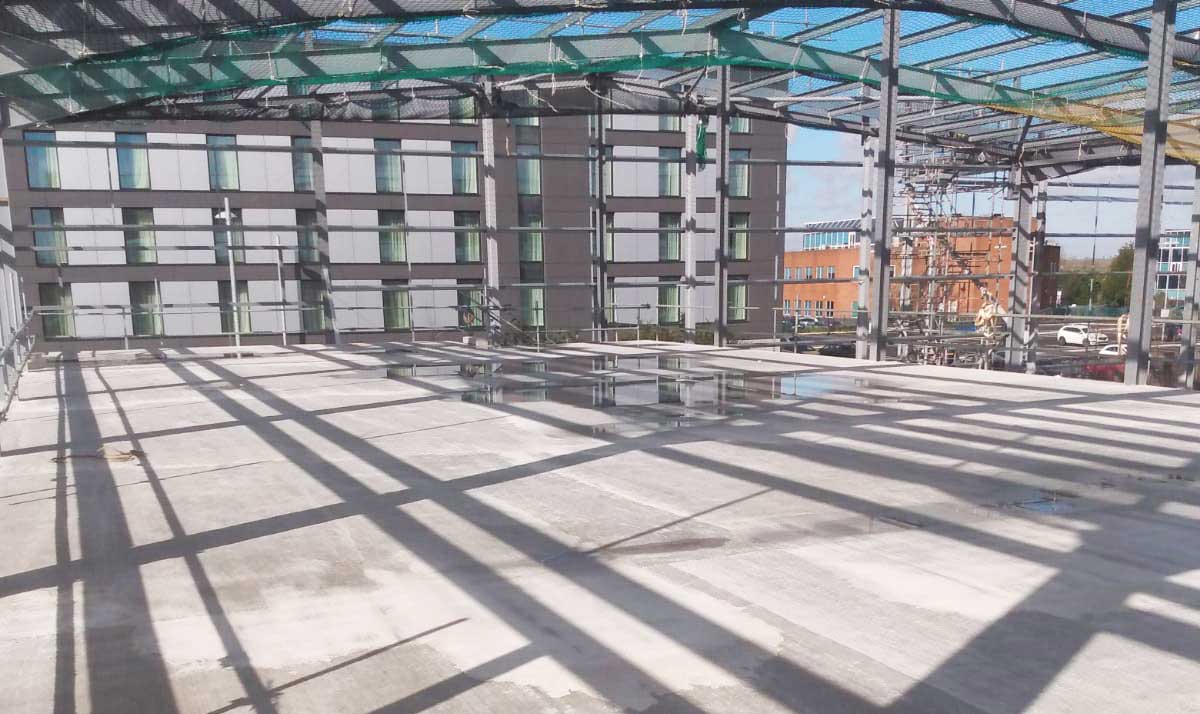Unlocking the Ecological Benefits of Recycled Composites in Building and Style
In the world of building and construction and design, the usage of recycled compounds holds considerable guarantee for enhancing sustainability practices and minimizing environmental impact. The change towards a more lasting future in these sectors pivots on unlocking the complete capacity of recycled composites.

Ecological Effect Reduction
The decrease of environmental impact with using recycled compounds in building and layout plays a critical duty in lasting techniques. By incorporating recycled composites into building products, the construction sector can dramatically decrease its carbon footprint and add to a more green future. These lasting materials, made from repurposed plastics, wood fibers, or other recycled elements, offer a viable alternative to standard building products without jeopardizing on quality or sturdiness.
Recycled compounds assist divert waste from landfills and decrease the need for removing raw products, hence conserving natural deposits. In addition, the manufacturing process of these composites often eats less energy and sends out fewer greenhouse gases contrasted to generating virgin products (composites). This change towards utilizing recycled composites not only decreases environmental damage but likewise advertises a round economic situation by encouraging the reuse of materials that would certainly otherwise be disposed of
Waste Minimization
With a focus on lessening waste in building and design, the integration of recycled composites provides a sustainable option to minimize ecological impact. Waste reduction is a crucial element of sustainable practices, and the usage of recycled composites provides an opportunity to attain this objective properly. By utilizing materials that have actually already offered their first function, such as recycled plastics or reclaimed wood fibers, the building and design markets can dramatically lower the quantity of waste produced and sent out to garbage dumps.
Recycled composites have the prospective to divert significant quantities of waste from typical disposal techniques, adding to a much more round economy where sources are utilized successfully. Additionally, the production process of recycled composites frequently eats much less power and produces fewer discharges contrasted to virgin products, even more decreasing the environmental footprint of building and construction and style jobs.
Implementing waste minimization techniques through the consolidation of recycled composites not just aids in preserving natural sources however also promotes a much more lasting strategy to building and creating for a greener future.
Power Preservation
Incorporating recycled compounds not only lessens waste in building and construction and layout however additionally plays a vital function in improving energy preservation methods within the industry. Using recycled compounds in building and construction can substantially contribute to energy preservation with numerous means. Firstly, the manufacturing of virgin products generally requires considerable energy inputs, whereas making use of recycled composites takes in much less power, thereby decreasing total power usage. Furthermore, incorporating recycled compounds can add to far better insulation residential properties in buildings, decreasing the demand for extreme home heating or air conditioning, and consequently lowering power usage for climate control. The lightweight nature of lots of recycled composites can lead to lighter frameworks, calling for less energy for transport and setup. By promoting the use of recycled compounds in building and layout, the sector can make substantial strides towards achieving power effectiveness and lowering its carbon footprint, inevitably adding to a more lasting constructed atmosphere.
Carbon Impact Reduction
Enhancing sustainability practices with the usage of recycled compounds in building and construction and style substantially lowers the carbon footprint of the industry. By integrating recycled products right into the production of compounds, the demand for virgin sources lowers, causing reduced power consumption and greenhouse gas discharges related to typical manufacturing processes. This reduction in carbon footprint is critical in combating climate adjustment and promoting a much more eco-friendly strategy to construction and design.
The carbon footprint reduction achieved through the adoption of recycled compounds lines up with the worldwide push in the direction of lasting methods and the reduction of industrial more info here exhausts. Inevitably, by focusing on the integration of recycled composites, the sector can make substantial strides in lowering its carbon impact and adding to a more lasting future.
Lasting Future
The combination of recycled compounds in building and construction and layout not just addresses immediate environmental problems yet likewise lays a strong foundation for a my sources sustainable future in the sector. By incorporating recycled compounds into structure materials and items, the building and construction and style sectors can substantially lower their reliance on virgin resources, causing an extra round economic situation. This change in the direction of sustainability is essential for minimizing the environmental impact of typical building methods, which frequently lead to high levels of waste generation and resource exhaustion.

Conclusion
Finally, recycled composites provide substantial ecological benefits in construction and design by reducing environmental influence, decreasing waste, preserving energy, decreasing carbon footprint, and advertising a sustainable future. Welcoming the usage of recycled compounds can add to an extra environmentally-friendly technique to building and layout, ultimately causing a much more lasting and greener future for all.
The reduction of ecological impact through the use of recycled compounds in building and construction and design plays a crucial duty in sustainable practices.With an emphasis on minimizing waste in building and design, the combination of recycled composites uses a lasting option to reduce ecological impact. By promoting the use of recycled compounds in building and construction and style, the market can make significant strides in the direction of accomplishing power effectiveness and minimizing its carbon impact, ultimately contributing to a more sustainable developed environment.

Comments on “Composites: The Future of Lasting Building Materials”